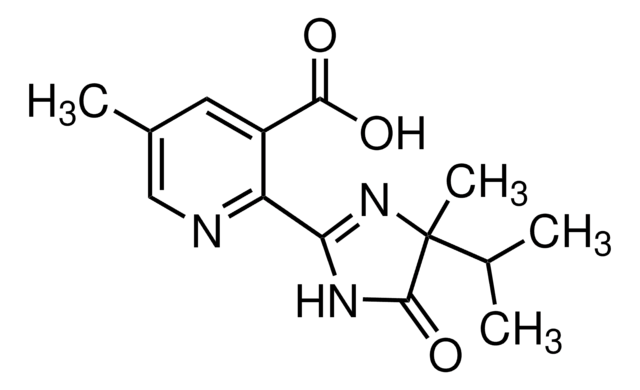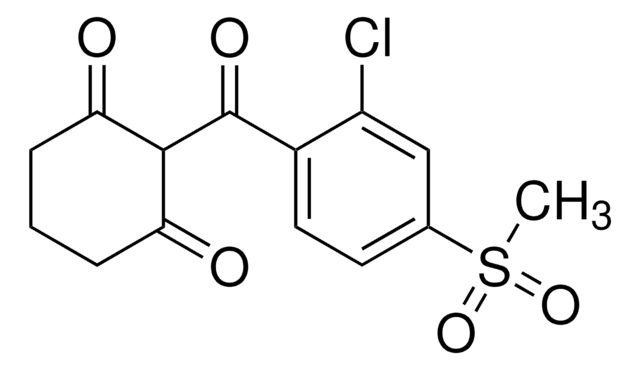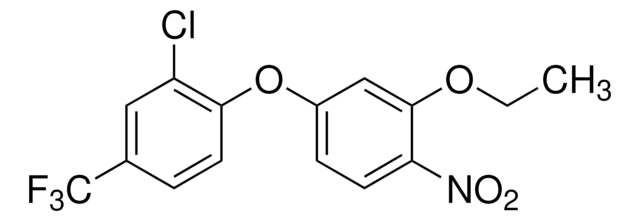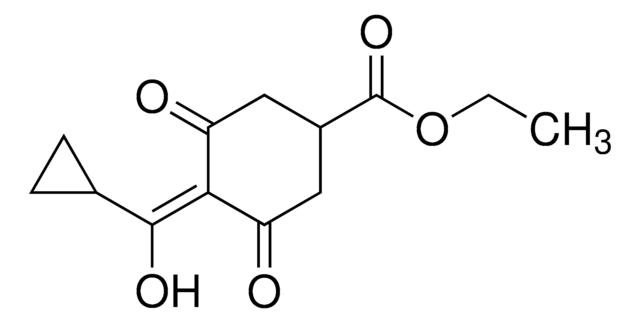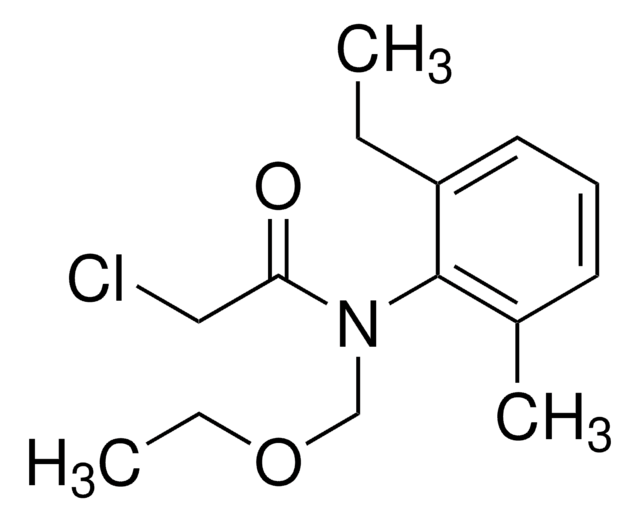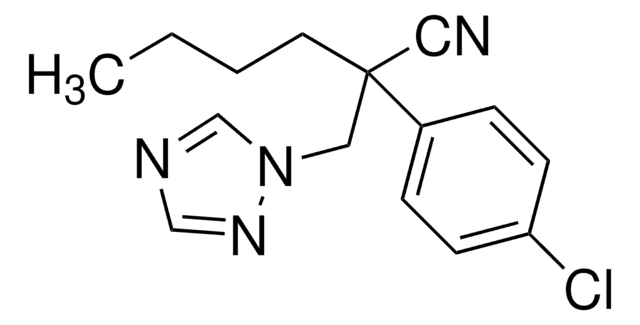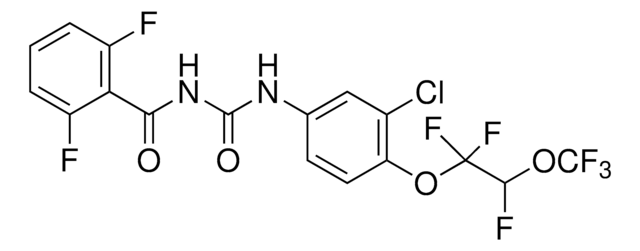34210
Nicosulfuron
PESTANAL®, analytical standard
Synonim(y):
1-(4,6-Dimethoxy-2-pyrimidinyl)-3-[3-(dimethylcarbamoyl)-2-pyridylsulfonyl]urea, 2-[(4,6-Dimethoxypyrimidin-2-ylcarbamoyl)sulfamoyl]-N,N-dimethylnicotinamide
About This Item
klasa czystości
analytical standard
Poziom jakości
linia produktu
PESTANAL®
okres trwałości
limited shelf life, expiry date on the label
metody
HPLC: suitable
gas chromatography (GC): suitable
Zastosowanie
agriculture
environmental
format
neat
ciąg SMILES
COc1cc(OC)nc(NC(=O)NS(=O)(=O)c2ncccc2C(=O)N(C)C)n1
InChI
1S/C15H18N6O6S/c1-21(2)13(22)9-6-5-7-16-12(9)28(24,25)20-15(23)19-14-17-10(26-3)8-11(18-14)27-4/h5-8H,1-4H3,(H2,17,18,19,20,23)
Klucz InChI
RTCOGUMHFFWOJV-UHFFFAOYSA-N
Szukasz podobnych produktów? Odwiedź Przewodnik dotyczący porównywania produktów
Opis ogólny
Zastosowanie
Informacje prawne
Hasło ostrzegawcze
Warning
Zwroty wskazujące rodzaj zagrożenia
Zwroty wskazujące środki ostrożności
Klasyfikacja zagrożeń
Aquatic Acute 1 - Aquatic Chronic 1
Kod klasy składowania
11 - Combustible Solids
Klasa zagrożenia wodnego (WGK)
WGK 1
Temperatura zapłonu (°F)
Not applicable
Temperatura zapłonu (°C)
Not applicable
Środki ochrony indywidualnej
dust mask type N95 (US), Eyeshields, Gloves
Choose from one of the most recent versions:
Masz już ten produkt?
Dokumenty związane z niedawno zakupionymi produktami zostały zamieszczone w Bibliotece dokumentów.
Klienci oglądali również te produkty
Nasz zespół naukowców ma doświadczenie we wszystkich obszarach badań, w tym w naukach przyrodniczych, materiałoznawstwie, syntezie chemicznej, chromatografii, analityce i wielu innych dziedzinach.
Skontaktuj się z zespołem ds. pomocy technicznej
